Subaru Forester: Air filtration system
Replace the filter element according to the replacement schedule as follows. This schedule should be followed to maintain the filter’s dust collection ability. Under extremely dusty conditions, the filter should be replaced more frequently. It is recommended that you have your filter checked or replaced by your SUBARU dealer. For replacement, use only a genuine SUBARU air filter kit.
Replacement schedule:
Every 12 months or 7,500 miles (12,000
km) whichever comes first

Contact your SUBARU dealer if the following occurs, even if it is not yet time to change the filter.
– Reduction of the airflow through the vents.
– Windshield gets easily fogged or misted.
NOTE
The filter can influence the air conditioning,
heating and defroster perfor-
mance if not properly maintained.
Replacing an air filter
1. Remove the glove box.
(1) Open the glove box.
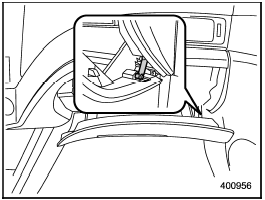
(2) Remove the damper shaft from the glove box.
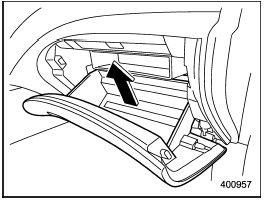
(3) Pull out the glove box.
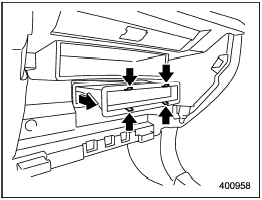
2. Remove the air filter.
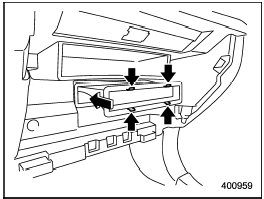
3. Replace the air filter element with a new one.

The arrow mark on the filter must point UP.
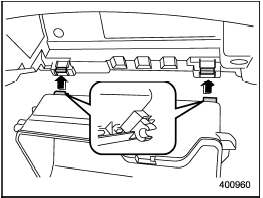
4. Reinstall the glove box, and connect the damper shaft.
5. Close the glove box.
6. LABEL installation
(1) Fill out the information on the
service label (small).
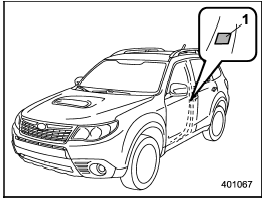
1) Service label
(2) Attach the service label to the driver’s side door pillar.
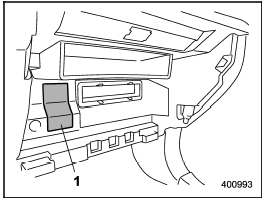
1) Caution label
(3) Attach the caution label next to the air filter as shown in the illustration.
See also:
Electronic compass (if equipped)
The compass heading is displayed in the center stack display.
The compass reading may be affected when you drive near large
buildings, bridges, power lines and powerful broadcast antenna. Magnetic
or metallic objects placed in, on or near the ve ...
Bulb replacement
Headlamp
1. Open the hood.
2. Reach behind the headlamp unit in the engine compartment
to access the headlamp bulb lock ring.
3. Firmly grasp the lock ring on the back of the headlamp
unit housing.
4. Rotate the lock ring on the back of the ...

 Operating tips for heater and air conditioner
Operating tips for heater and air conditioner